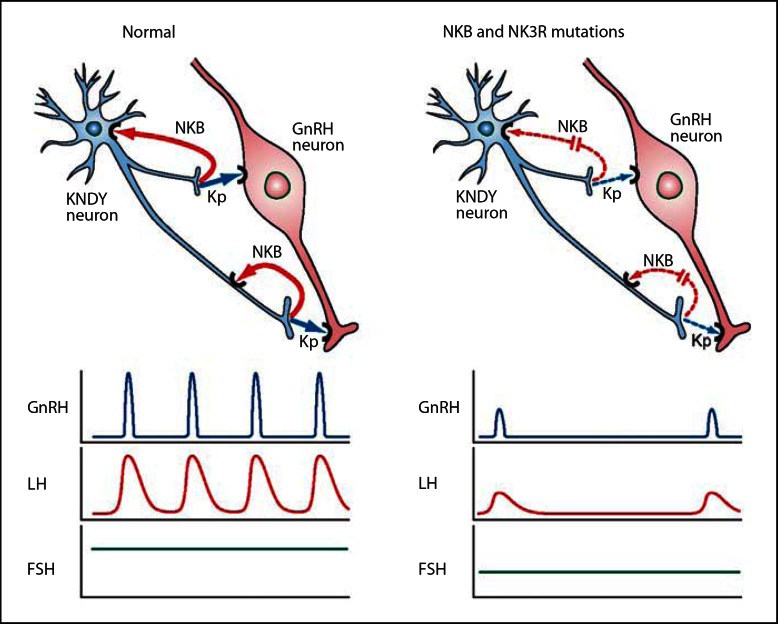Fig. 3.
Schematic of proposed actions of a KNDY neuron on GnRH secretion summarizing findings from human and animal studies. Impacts of NKB and kisspeptin release on GnRH neuron secretion and LH and FSH responses in normal subjects (left) and patients with NKB- and NK3R-inactivating mutations (right). In normal subjects NKB acts in an autocrine (shown) or possibly paracrine (not shown) modality to reinforce kisspeptin secretion, which stimulates the GnRH neuron to secrete GnRH in pulses with a frequency interval of about 90 min. This results in corresponding LH pulses and normal FSH levels. In patients with NKB-inactivating (TAC3) and NK3R-inactivating (TACR3) mutations the absence of NKB stimulation of the KNDY neuron results in low kisspeptin secretion and resulting low GnRH pulse frequency with correspondingly low LH pulse frequency and amplitude, and lower end of normal FSH secretion. Continuous infusion of kisspeptin overrides this deficiency to restore the normal pattern of LH pulses and a small increase in FSH. Note that the most parsimonious scheme involving kisspeptin and NKB is presented. In reality a greater complexity of regulation of the KNDY neuron including DYN and other regulators, as well as additional inputs into the GnRH neuron will be operative.

